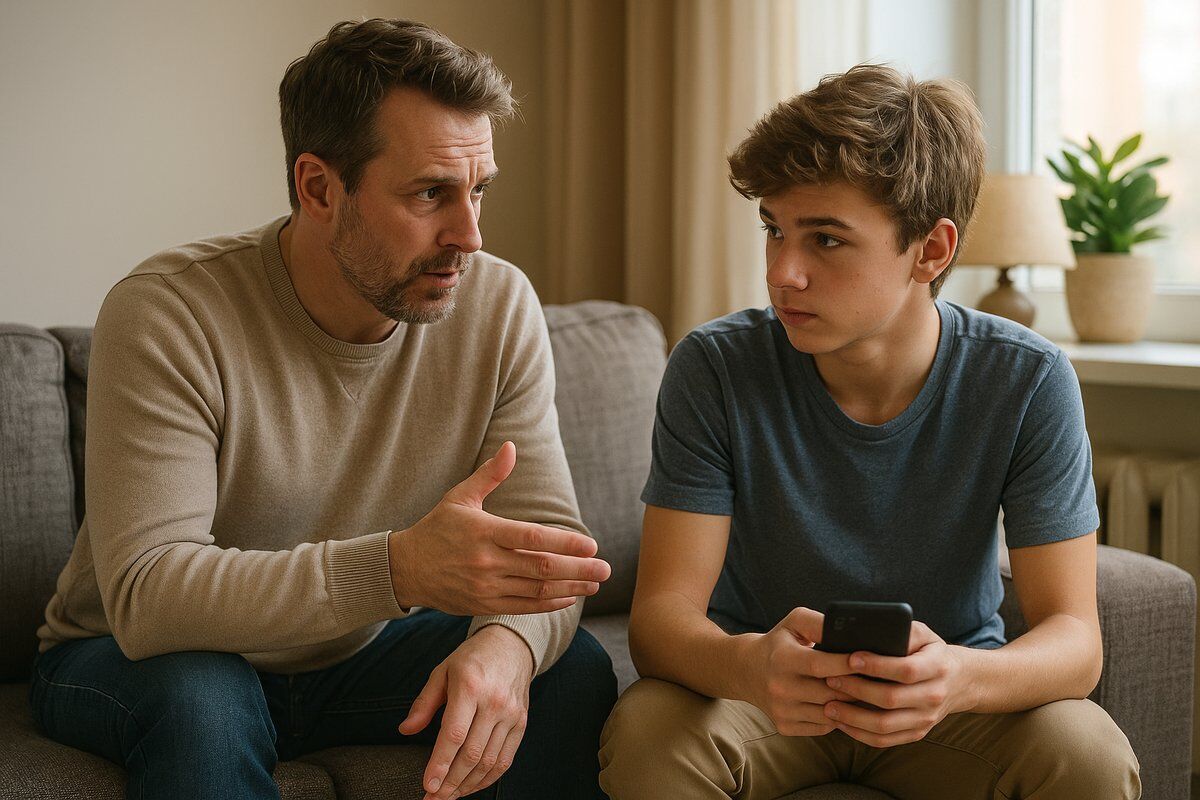Every time I tell my teenage son to put his phone away, he groans like I’ve just shut off his oxygen supply. We’ve tried everything: app timers, phone-free dinners, even that one afternoon where I hid the WiFi router on a high shelf. The result? He found the router, climbed like a monkey and replaced it while side-eyeing me with all the disdain a 15 ‑year old can muster. It’s easy for me to fall back on the same lecture my dad gave me about television, except our kids’ screens are with them all day and filled with endless content rather than three fuzzy channels. And if I’m honest, I’m scrolling far more than he is when I’m supposed to be reading a book. So what’s a parent supposed to do?
Researchers at Weill Cornell Medicine recently put my frustration under a microscope. They followed more than 4,300 children, starting at ages nine and ten, for four years and recorded how much time they spent on screens and how they felt about that use. The surprising result? Total screen time alone didn’t correlate with mental health problems. Kids who logged five hours a day weren’t automatically more anxious or depressed than those who spent two. What mattered was whether they felt compelled to use screens—if they reported feeling unable to stop, sneaking devices late at night or anxious if a battery dipped, those kids were more likely to develop depression, aggressive behaviour and even suicidal thoughts. In other words, the problem isn’t how long the music is playing; it’s whether they know how to press pause.
That distinction is becoming part of public health conversations, including here at home. Egypt’s Ministry of Health has identified social media and gaming addiction as a significant threat to teen mental health and is treating it like a real disease. They’ve set up committees, hotlines and inpatient programs for early detection and treatment. I never would have imagined calling a hotline because my son can’t stop scrolling, but that’s the reality for families who are watching their kids withdraw from real life, failing classes and shutting down. The acknowledgement from health authorities means that what many of us dismissed as “kids these days” is being recognised as something worth taking seriously and caring for—without shame.
So where does that leave us as parents? We can throw our hands up and ban all devices, but we’re not moving to a cave. Screens aren’t going anywhere, and they aren’t inherently evil. They allowed our kids to learn during lockdowns, stay in touch with cousins abroad and teach themselves guitar chords and TikTok dances that look suspiciously like the Macarena. Our job is to help them build a relationship with technology that isn’t compulsive. That means watching for signs of distress around devices, like constant checking or irritability when separated. It means modelling restraint (yes, Dad, put your own phone down) and talking to our teens about why they reach for their phones when they’re bored or anxious. It might mean setting some boundaries together, like no phones at 2 AM or leaving devices downstairs overnight, and then respecting those limits ourselves. And it definitely means reminding them that the world outside the glowing rectangle is still there, waiting for them to look up. Maybe one day my son will even thank me for that afternoon I hid the router. Stranger things have happened.
Sources:
[1] Weill Cornell Medicine report on addictive screen use and adolescent mental health
[2] Daily News Egypt article about Egypt’s initiative for social media addiction







Leave a Reply
You must be logged in to post a comment.